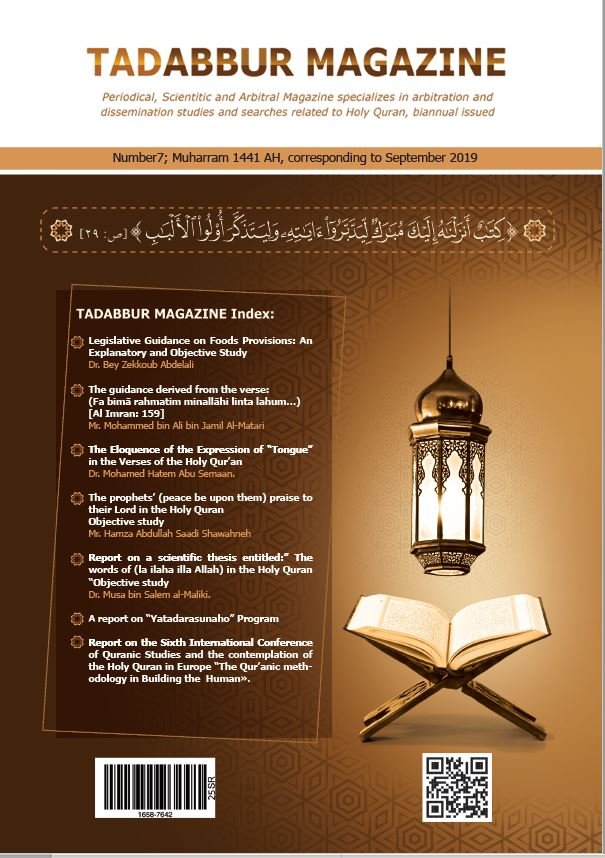Report on a scientific thesis entitled:” Thewords of (la ilaha illa Allah) in the Holy Quran“Objective study
Main Article Content
Abstract
The phrase "There is no god but Allah" is the great word for which creation was made, for which messengers were sent, and for which heavenly books were revealed.
There is no doubt that the Noble Qur’an, the final and most esteemed of these books, and the most eloquent in expression, has given this great word utmost attention. It appears in the Qur’an in forty instances, supported by evidence and proofs, associated with Allah’s names, attributes, and actions. It is also linked with the commands and prohibitions it entails, as well as the profound meanings that point to its significance and implications, within wondrous Qur’anic contexts that testify to the truth of this Qur’an and that it is "from One Wise and Knowing" [An-Naml: 6].
Therefore, studying this great word through the Qur’an—considering the ways it is addressed, the interpretations of scholars regarding its meanings, styles, and contexts, and examining it objectively—is an urgent and critically important matter. This is due to the clarity and explanation it provides for the meaning of this great word through the Noble Qur’an.
Downloads
Article Details
Conference Proceedings Volume
Section

This work is licensed under a Creative Commons Attribution-NonCommercial-ShareAlike 4.0 International License.
Indicating to the intellectual property, copyrights, and open access right:
According to the Budapest Initiative 2002; tadabbur Journal, which is issued by Khibrat Taibah For Research and Studies in Medina, provides free open access to its publications, and applies the Creative Commons license:
Attribution- Non-Commercial 4.0 International (CC BY-NC 4.0) for the works it publishes from peer-reviewed scientific research and reports, which are freely available on the Internet, and which allows any user to read, download, copy, and distribute (Convert), print, search, or create links to the full texts of the journal’s research and publications, and analyze them in an automatic manner for discovering them, sending them as software data, or using them for any other legal purpose, without financial, legal, or other technical barriers beyond those related to Internet access.
It also highlight that the only barrier to reproduction and distribution, and the only role of copyright in this field, is the necessity of granting the authors of the journal’s research and reports and the publisher the journal; Control over their works, and the right to official recognition and reference citations.





